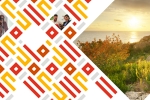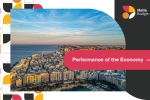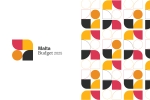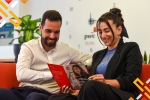With COVID-19 never before has the concept of life-long learning truly hit home as hard. It also made us aware of the pressure on the timing of learning, that you learn when you need to know or when your necessity requires you to know. Consequently, the need for digital learning has increased due to its efficiency to deliver on the demand for the training of these new skills. In parallel, corporations have undergone a massive digital revolution. The much spoken about “4th industrial revolution”, which includes human, data and tech skills, has brought an extra challenge to the Learning & Education (L&E) function to source such knowledge and transform it into learning.
We also know that this sort of “pick and choose” learning style has left a tremendous gap in the application and personalisation of learning. This is especially evident when learning content is not well curated by the L&E professionals and is far detached from the “learner-centered approach”. So, whereas corporates have increased their pace of delivering learning content, the challenge that remains is curating this content to be personalised to the individual and the organisation’s needs. While learning modalities might have changed, the way a person learns has not: individuals obtain roughly 70 percent of their knowledge from job-related experiences, about 20 percent from interactions with others, and the remaining 10 percent from formal educational events. This means that, whereas an individual is able to procure that 10% of learning through online webinars, readily available e-learns etc, L&E and talent development professionals are still faced with curating content to complement the 70% from related experiences and the 20% from learning from others. Getting this right will propel organisations into a new world of “learning for the digital age.”
L&E, for too long, has focused on creating day-long training programs where attendees are all on the same path, regardless of their individual knowledge or experience. The first step to a proper talent development programme is the design of a corporate competency framework that incorporates 3 main groups of competencies: personal capabilities, professional capabilities and organisation capabilities. This will ensure that the aforementioned 10% portion of knowledge transfer is targeted towards the individual and the organisation. Naturally this learning needs to be congruent to today’s speed...bite sized, interactive, and readily available.
The next step is for L&E to keep track of a learner’s progress. By providing them with initiatives, such as badges in an appropriate learning management system, learners can be guided from knowledge gaining to knowledge application. This can be done in a physical method of learning such as with focus groups or workshops, however learning technologies supported by the corporation’s learning management system can also consider Alternative Reality (AR) and Virtual Reality (VR). Even the aspect of learning from each other can be shifted to be more digital. Whereas before this happened through class group work, it can be replicated through numerous other ways such as group exercises, quizzes and peer-to-peer coaching. All these elements, when embedded in a well-structured blended learning journey composed of 70:20:10 elements, create great levels of engagement.
There’s a whole world of quality learning content already available online; selecting the right mix of ingredients to frame and curate a topic helps in delivering content that learners are looking for, and at a faster pace. Building a learning ecosystem to support such a curation is the shift that L&E professionals need to make. With this approach, L&E have developed the right talent development ecosystem, made up of learning experts, learning systems, and processes. Learners should be able to choose the content that best matches their current challenges or questions, or they may decide to follow the entire set of learning materials from beginning to end. They now have control over what they learn. That intrinsic motivation results in increased engagement with the content and, therefore, more lasting impact.
PwC's Academy can assist clients to set up a L&E function that supports talent development.

Contact us
















